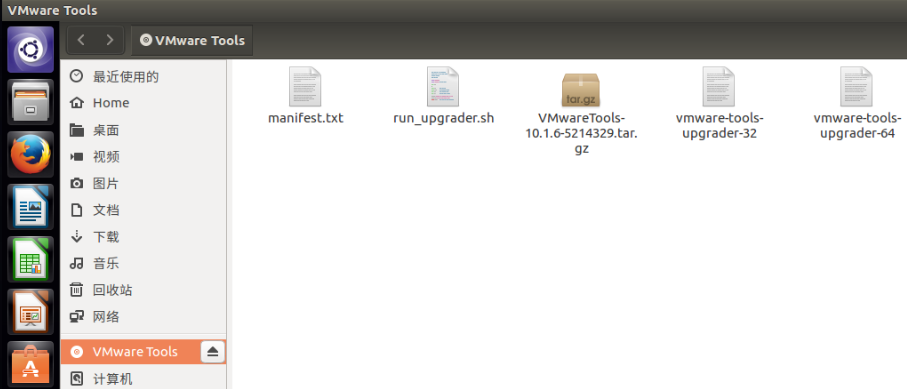It is convenient to install one or two virtual machines on one's own computer for learning cross-platform and cross-system technologies. VMware is one of the commonly used virtual machine software. Among them, VMware Workstation is a fee-based version, which is more powerful and comprehensive; but if you play locally, you can use free VMware Player for non-commercial purposes, which is enough. VMware Tools are programs that enhance the performance of virtual machines. When using VMware Player, prompt updates will occur.


root@ubuntu:~# mount | grep cdrom root@ubuntu:~# mkdir /mnt/cdrom root@ubuntu:~# mount /dev/cdrom /mnt/cdrom mount: /dev/sr0 is write-protected, mounting read-only root@ubuntu:~# ls /mnt/cdrom/ manifest.txt run_upgrader.sh VMwareTools-10.1.6-5214329.tar.gz vmware-tools-upgrader-32 vmware-tools-upgrader-64 root@ubuntu:~# tar zxpf /mnt/cdrom/VMwareTools-10.1.6-5214329.tar.gz root@ubuntu:~# ls backup c java python vmware-tools-distrib Template Picture Download Desktop benchmarker examples.desktop pycharm-community-2017.1.3 tpcc-mysql Public Video Document Music root@ubuntu:~# umount /dev/cdrom root@ubuntu:~# cd vmware-tools-distrib/ ; ls bin caf doc etc FILES INSTALL installer lib vgauth vmware-install.pl root@ubuntu:~/vmware-tools-distrib# ./vmware-install.pl open-vm-tools packages are available from the OS vendor and VMware recommends using open-vm-tools packages. See http://kb.vmware.com/kb/2073803 for more information. ***** This part of the crazy print output has been omitted; however, you need to manually press Enter and other operations to run the configuration. ***** To enable advanced X features (e.g., guest resolution fit, drag and drop, and file and text copy/paste), you will need to do one (or more) of the following: 1. Manually start /usr/bin/vmware-user 2. Log out and log back into your desktop session 3. Restart your X session. Enjoy, --the VMware team Found VMware Tools CDROM mounted at /media/student/VMware Tools. Ejecting device /dev/sr0 ...
It would have been a great success to be here. "Open-vm-tools packages are available from the OS vendor and VMware recommendations"
using open-vm-tools packages, the original operating system provides a better and more recommended package called "open-vm-tools", which of course uses the recommended program to install.
root@ubuntu:~# apt-cache search open-vm-tools open-vm-tools - Open VMware Tools for virtual machines hosted on VMware (CLI) open-vm-tools-dev - Open VMware Tools for virtual machines hosted on VMware (development) open-vm-tools-desktop - Open VMware Tools for virtual machines hosted on VMware (GUI) open-vm-tools-dkms - Open VMware Tools vmxnet kernel module (deprecated) root@ubuntu:~# ls /usr/bin/ | grep vmware vmware-config-tools.pl vmwarectrl vmware-guestproxycerttool vmware-hgfsclient vmware-toolbox-cmd vmware-uninstall-tools.pl vmware-user vmware-xferlogs root@ubuntu:~# vmware-uninstall-tools.pl Uninstalling the tar installation of VMware Tools. Stopping services for VMware Tools File /etc/vmware-caf/pme/config/cafenv-appconfig is backed up to /etc/vmware-caf/pme/config/cafenv-appconfig.old.0. This program previously created the directory /usr/lib/vmware-caf/pme/lib, and was about to remove it. Since there are files in that directory that this program did not create, it will not be removed. File /etc/pulse/default.pa is backed up to /etc/pulse/default.pa.old.1. The removal of VMware Tools 10.1.6 build-5214329 for Linux completed successfully. Thank you for having tried this software. root@ubuntu:~# apt-get install open-vm-tools open-vm-tools-desktop